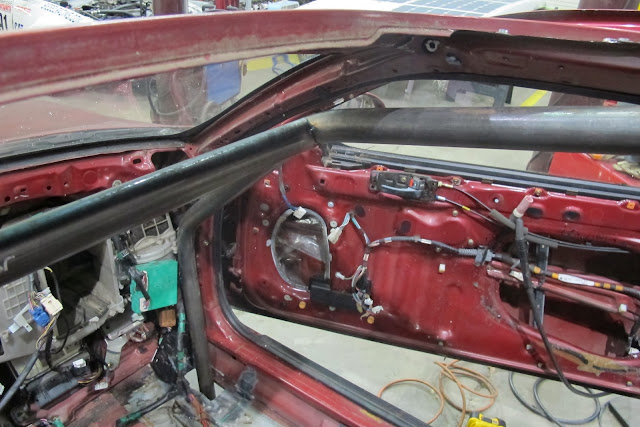Finally have a couple minutes to start a build thread about this...
I recently decided that it was time to do another crap-can race. I did a 24 hr Lemons race a few years ago and had a great time, but liked the idea of ChumpCar, which seemed a little better oriented towards more serious racing.
I wanted to build my own car this time so that I could choose the races to enter, the modifications, and because I really enjoy going through the process of building a car. So, after reading through their new rules, which set specified values for various cars, I came up with a couple options: http://grassrootsmotorsports.com/forum/grm/drivers-needed-bench-racing-grudge-match/71021/page1/
A few days later a Craigslist ad for a '92 SC300 came to my attention and I went to take a look at the car. It had been sitting in a "barn" (that's probably a generous description) for ~7 years after the PO hit a deer, but looked to be in pretty decent shape mechanically. It only had 124k miles on it and there was evidence of some regular maintenance, including a brand new set of Pirelli tires, which had unfortunately dry-rotted into oblivion. However, the owner had lost the key so I couldn't start the engine.
I decided it was worth the $1000 I negotiated down to, convinced that the rare manual transmission would be worth the price even if the rest of car turned out to be crap.
Here's the car as purchased:


Has some crappy half-finished bondo work, missing most of the front end, rest of the paint had been sanded and left for years, windows were left open so the interior was shot, but hey, it's got a 2J and a 5-speed, right?
First order of business was getting a key made. The local Lexus dealer was happy to help (with proof of ownership) by making me a key on-the-spot. Bonus, it only cost, $37.10 - must have been the cheapest trip to a Lexus dealer in history!
I bet my girlfriend a trip to the local gourmet icecream shop that after oiling the cylinders and installing a charged battery it would fire right up. Promptly lost that bet due to an aftermarket security device and bad fuel pump. The security electronics were easily removed - what a joke!
I pulled the rear seat to get to the fuel pump access panel and pulled out the offending unit. This led to more issues as I found that there was some weird corrosion gunk built up on all the steel surfaces in the tank that weren't submerged in fuel (a good argument to storing a car with a full tank, I think):
I had to drop the tank to flush it out thoroughly, which was a pain, but at least I know it's in decent shape now. Here's some of the gunk that came out of the tank:
I cleaned up the corrosion pretty well paying some special attention to the fuel sender, and installed a new Bosche fuel pump:
After taking care of the security system and fuel system the car finally did fire right up without any sign of protest. Warmed up with no issues, took it for a quick rip around the neighborhood, and it ran great. No check engine lights, everything worked great. I was pretty excited. So, I decided to start planning out the rest of the build.
I've been working a few hours a week on the car for the last month and a half now and it's coming along nicely. Lots more updates to come when I can find more time.
Here are some teasers of the updates to come:









































 The front down-tubes and spreader plates were full-welded, boxed in and tied into the frame rails/door sills.
The front down-tubes and spreader plates were full-welded, boxed in and tied into the frame rails/door sills.



































